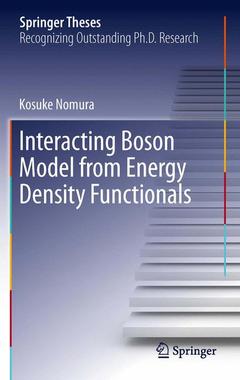Interacting Boson Model from Energy Density Functionals, 2013 Springer Theses Series
Auteur : Nomura Kosuke

Basic Notions.- Rotating Deformed Systems with Axial Symmetry.- Weakly Deformed Systems with Triaxial Dynamics.- Comparison with Geometrical Model.- Is axially Asymmetric Nucleus Gamma Rigid or Unstable?.- Ground-state Correlation.- Summary and Concluding Remarks.
Dr. Kosuke Nomura
Institut für KernphysikUniversität zu Köln
Köln
Germany
(Current address)
Date de parution : 03-2015
Ouvrage de 188 p.
15.5x23.5 cm
Date de parution : 02-2013
Ouvrage de 188 p.
15.5x23.5 cm
Disponible chez l'éditeur (délai d'approvisionnement : 15 jours).
Prix indicatif 99,99 €
Ajouter au panier